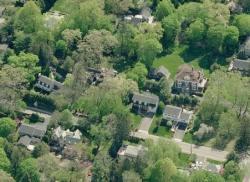Reval Recap: Who Filed the Most Grievances and Where Do We Go From Here?
- Details
- Written by Joanne Wallenstein
- Hits: 6817
 Scarsdale resident and statistician Michael Levine provided the Board of Trustees with some interesting data about the Scarsdale revaluation. He analyzed the 950 grievances that were filed following the first village-wide reassessment in 49 years and showed the number and percentage of grievances by neighborhood. Not surprisingly the highest percentage of grievances were filed in the neighborhoods with the greatest changes in valuations between 2013 and 2014. So which neighborhoods have the highest percentage of unhappy homeowners ... it looks like Heathcote 1 and Quaker Ridge 1. The neighborhoods correspond to the map shown below.
Scarsdale resident and statistician Michael Levine provided the Board of Trustees with some interesting data about the Scarsdale revaluation. He analyzed the 950 grievances that were filed following the first village-wide reassessment in 49 years and showed the number and percentage of grievances by neighborhood. Not surprisingly the highest percentage of grievances were filed in the neighborhoods with the greatest changes in valuations between 2013 and 2014. So which neighborhoods have the highest percentage of unhappy homeowners ... it looks like Heathcote 1 and Quaker Ridge 1. The neighborhoods correspond to the map shown below.
Here are Mr. Levine's charts – see his notes below:

The "Grievances as % of Roll" column shows the "Grievance Count" as a percentage of the "Roll Count". This rate is 15.3% for Scarsdale overall, but it varies significantly by neighborhood.
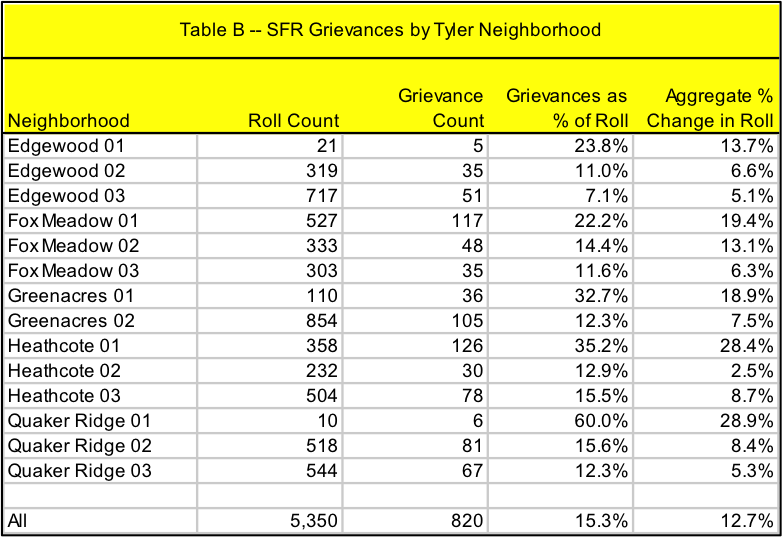
The "Aggregate % Change in Roll" column is the change in total assessed values from 2013 FMV to 2014 Tentative. Not surprisingly (but without getting statistically technical), there is a degree of correlation in that the neighborhoods with the greater increases in valuations tend to also have the greater rates of grievance. This report does not opine on the question of whether the variances among neighborhoods, driven in part by the Tyler land valuation, are correct or justifiable.
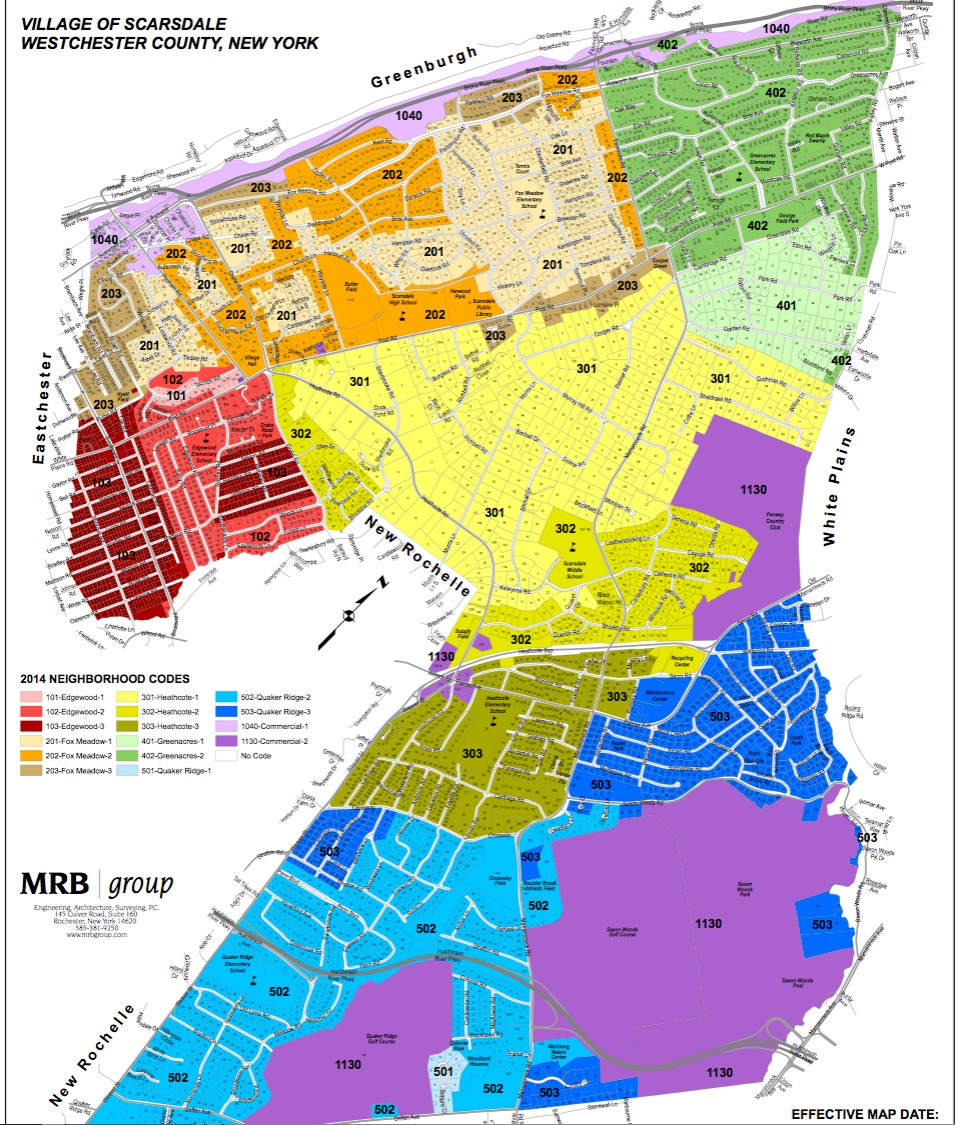
In other news about the revaluation, the Finance Committee of the Scarsdale Village Board of Trustees met on October 14 to make plans for cyclical updates of the revaluation. John Wolham from the NYS Office of Real Property Tax Services was present along with John Ryan of J.F. Ryan Associates who was brought in to consult on the last revaluation conducted by Tyler Technologies.
The discussion was about how often to do updates and what methodology to use. In order to encourage municipalities to keep their assessments updated, the Office of Real Property Tax Services gives municipalities $5 per parcel for reappraisals done at least once every four years. In addition they require municipalities to do an inventory of all properties at least once every six years. The inventory is an evaluation of the property from the street and not an interior inspection. Though frequent reassessments are not legally mandated, they are considered best practice as valuations are maintained near market value.
Village Manager Al Gatta and Assessor Nanette Albanese proposed that the next reassessment be done for the 2016 assessment role which would be effective in 2017. In order to accomplish this, the Village would need to retain a firm to do the update and the work would need to begin in December 2014. This would not be a revaluation that included interior inspections of homes – except in cases of a sale or where a building permit was issued for the property. Rather the inspectors would evaluate condition and grade by observing homes from the street. The cost to keep the role updated on an annual basis was estimated to be $100,000. A firm would be retained to do the work – so no additional staff members would be added at Village Hall.
John Ryan suggested that the Village use a "direct market model approach" to determine valuations. This model would use the sale prices of all homes sold in the prior two-year period to develop an algorithm to price all properties. The model would be continually updated and provide a "solid database" of information to use when assessing properties.
Since only a few evaluators would be retained, Ryan believed the results would be more consistent than during the prior revaluation when Tyler had a very large staff doing inspections. Gatta indicated that the staff would like to retain Ryan's firm to do the next assessment.
At the conclusion of the meeting, Mayor Steves asked the Village staff to provide the trustees with a recommendation on these cyclical updates including the timing, scope and estimated cost. The trustees will evaluate the proposal and decide how to proceed.
In the Spotlight: Special Education
- Details
- Written by Joanne Wallenstein
- Hits: 7378
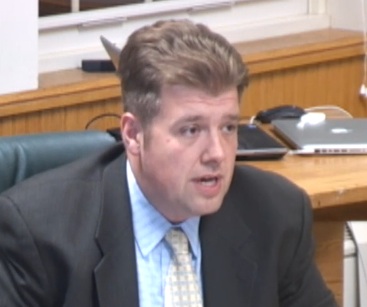 Almost 800 students, or 16% of the population of the Scarsdale Public Schools qualifies for special services from the district and this program was the focus of the education report at the work session at the October 6 Board of Education. Newly-appointed Director of Special Education, Eric Rauschenbach presented an overview of the students served by Scarsdale Special Education Programs, the breadth of services in the District, a review of the budget and goals for the year.
Almost 800 students, or 16% of the population of the Scarsdale Public Schools qualifies for special services from the district and this program was the focus of the education report at the work session at the October 6 Board of Education. Newly-appointed Director of Special Education, Eric Rauschenbach presented an overview of the students served by Scarsdale Special Education Programs, the breadth of services in the District, a review of the budget and goals for the year.
Who does the program serve? Mr. Rauschenbach identified Special Education students as classified in two groups. First, he mentioned students classified as Section 504. Scarsdale has 325 students (7% of total Scarsdale student population) in this group. Section 504 is a federal law that protects students with disabilities from being discriminated against at school. It requires schools to give children the same opportunities as students without disabilities through reasonable accommodation or modification. An example is the use of an elevator, or installation of a wheelchair ramp, or handrails. It may also include allowing a child with diabetes to have a snack in the classroom, or allowing a child with ADHD to stand up when needed during class.
The second group he mentioned is students who fall under the Individuals with Disabilities Education Act (IDEA). The district has 465 students (9% of total Scarsdale student population) classified in this group. To qualify, a child must have one of 13 identified disabilities (Autism, Blindness, Deafness, Emotional Disturbance, Hearing Impairment, Mental Retardation (Intellectually Disabled), Multiple Disabilities, Orthopedic Impairment, Other Health Impaired, Specific Learning Disability, Speech or Language Impairment, Traumatic Brain Injury, Visual Impairment) and it must adversely affect their educational performance.
What does the district offer? Mr. Rauschenbach explained the types of services offered at each school level (elementary school, middle school, high school). He noted that at all levels fundamental principles of the curriculum are inclusion and flexibility. The goal is for Special Education students to interact with the General Education students to the full extent possible and to be provided with the opportunity to participate in all activities in which their non-classified peers participate. Further, flexibility within the curriculum design allows Special Education students who have strengths in a particular area to be placed in a General Education class in the area of strength. Also common to all levels of schooling is the Learning Resource Center (LRC), but each LRC operates a little differently and focuses on various skill sets.
At the elementary school level, the LRC work is focused on literacy and math skills. Students may receive help in small groups within the LRC. Students who need help are taken out of the classroom at specific times when new lessons are not being taught. An LRC teacher may also help students during a lesson in the classroom. Also, in the elementary schools are one designated special class per grade with 12 Special Education students per one teacher and one aide. These students may move in and out of the General Education classes based on the subject and participate in homeroom and specials with their General Education class peers.
In middle school, the LRC adds to the academic focus the beginnings of self-advocacy, study strategies and time management. Additionally, middle school offers a parallel curriculum in English and Math with a ratio of 12 students to 1 teacher and 1 aide. There are integrated Social Studies and Science classes that are co-taught with Special Education teachers. As in the elementary schools, classified students can move in and out of General Education classes as necessary and participate in all the special quarterly offerings with their non-classified peers. The middle school also has a self-contained program for students with more severe disabilities. The focus of this program is basic academic skills, life skills and social skills.
In high school, in addition to providing support services in small groups on a pull out basis, the LRC functions as a drop in center. Students can go to the LRC during their free periods and it is also open after school four days per week. There is a continued focus on self-advocacy and time management. The high school also offers a Skills Curriculum of General Education classes that are smaller in size than other classes. In ninth grade, these Skills Curriculum classes are co-taught by Special Education teachers.
The high school also offers a comprehensive support program that builds on the self-contained program at the middle school. Students earn credentials from New York State rather than a diploma. There is a focus on functional math and reading as well as independent living skills such as cooking and hygiene. Students in this program may also participate in vocational experiences during which they spend 30 hours a week at an internship.
How much does it cost?: Mr. Rauschenbach discussed the budget for Special Education which is $12,873,949 spent as follows:
- Salaries 54%
- Direct Services (i.e., speech therapy, occupational therapy) 33%
- Transportation 6%
- Undesignated Fund (legal fees, settlements) 3%
- Other (supplies, travel, professional development) 3%
As indicated above, the majority of the budget goes directly to providing for students through teaching and direct services.
What are the objectives for the school year? Mr. Rauschenbach closed by highlighting his goals for the year in three categories: Communication, Professional Development and Community Understanding. He would like to develop a framework to facilitate the sharing of information on an on-going basis. He also stated the importance of keeping his faculty up to date on trends in Special Education and relevant laws and regulations through continued professional development opportunities. Finally, he wants to continue to communicate with the community as he has done this evening to develop a strong community understanding of Special Education programs. Mr. Rauschenbach indicated that he hopes to do some additional presentations later in the year discussing the progress he has made on his goals.
After the presentation, Dr. Hagerman and several BOE members highly commended Mr. Rauschenbach on his work to date. They noted that he just started the job in the spring and has already made an impact.
Please view Mr. Rauschenbach's presentation at the Board of Education Video-on-Demand site.
Scarsdale Bond Offering: How Much Is Too Much?
- Details
- Written by Melissa Hellman
- Hits: 4931
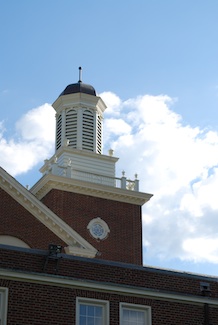 Should the Scarsdale School Board proceed with a $16.7 million bond or take advantage of low interest rates to borrow $18 million? That was just one of the discussions at the September 22 Board of Education meeting that can be viewd on the Scarsdale Schools Cable Channel An Executive Summary of the proposal was also issued with the evening's agenda and can be accessed here.
Should the Scarsdale School Board proceed with a $16.7 million bond or take advantage of low interest rates to borrow $18 million? That was just one of the discussions at the September 22 Board of Education meeting that can be viewd on the Scarsdale Schools Cable Channel An Executive Summary of the proposal was also issued with the evening's agenda and can be accessed here.
At an open work session on September 8, the Board approved by a vote of 7-0 a modified facilities plan that would require a $16.7 million construction bond. This approved proposal eliminated some elements from the designs as they existed in the spring and reduced the bond requirement by $1.3 million from $18 million.
In the months leading up to the September 8 work session, the proposed plan was thoroughly reviewed under Dr. Hagerman's leadership. Board Member Lee Maude presented a detailed history of the work and community input that occurred over the summer that led up to the final proposal including open study sessions, meetings with architects, schools tours, BOE members' input and discussion with school principals. Also, Dr. Hagerman stated that one of his objectives was to move this plan forward with the full support of the Board and the Scarsdale community and made his recommendations to reduce the cost of the bond with this objective in mind.
During the discussion period, Board member Lewis Leone suggested that since present borrowing conditions are extremely favorable it could be in the best service of the Board's fiduciary responsibilities to increase the level of borrowing. While no specific dollar amount was mentioned, the discussion centered on a possible additional amount that would not exceed $1.3 million.
There was much discussion about what projects additional money could be used to fund. Should some of the design elements eliminated from the original proposal be reinstated? Should the money be used to increase contingencies? Should it be used on other priority items that were never part of the original plan (examples include the artificial turf field, Dean Field, and new seats in the high school auditorium)?
The Board had this discussion with the knowledge that a draft of the overall facilities master plan just issued to them (not part of the night's agenda, but certainly on their minds) calls for $65 million in facilities spending by 2030 and therefore they did not want to lose this opportunity to borrow funds at a favorable rate.
Ultimately, it was decided that Dr. Hagerman and Assistant Superintendent Linda Purvis would review projects with top priority projects to determine if it makes sense to include them in the bond referendum. There would be no changes to the plans as approved on September 8.
At the same time, there was much concern expressed that returning to discussion mode on the agreed upon bond amount was opening up a "whole can of worms" on an issue that is now extremely time sensitive. In order to take advantage of retiring debt and favorable borrowing conditions, the Board must vote on October 6 to get the referendum proposal on the ballot for a community vote on December 11. Will the community support a larger bond referendum?
You can watch this very important portion of the meeting (here).
What do you think is the best way for the Board to proceed?
Expert Panel to Discuss the Impact of Technology on Education
- Details
- Written by Joanne Wallenstein
- Hits: 4863
 Is technology helping or hurting our children's literacy? We're all hooked on our electronic and media devices today, and our kids even more so. Should learning change to become more visual as well to better reflect society? Come to the JCC of Mid-Westchester on Tuesday night October 7 at 7:30 pm for a discussion on visual versus traditional methods of literacy and how new technologies can be used to advance education. The expert panel includes Steve Apkon - social entrepreneur and founder of the Jacob Burns Film Center who recently wrote a book about visual literacy entitled The Age of The Image, Dan Benton - CEO of technology money management firm Andor Capital Management, Board Member of both Colgate University and on-line educator Khan Academy Dr. Thomas Hagerman – Superintendent of Scarsdale School District, Cheryl Strauss Einhorn - Journalist, media consultant, and adjunct professor at Columbia University.
Is technology helping or hurting our children's literacy? We're all hooked on our electronic and media devices today, and our kids even more so. Should learning change to become more visual as well to better reflect society? Come to the JCC of Mid-Westchester on Tuesday night October 7 at 7:30 pm for a discussion on visual versus traditional methods of literacy and how new technologies can be used to advance education. The expert panel includes Steve Apkon - social entrepreneur and founder of the Jacob Burns Film Center who recently wrote a book about visual literacy entitled The Age of The Image, Dan Benton - CEO of technology money management firm Andor Capital Management, Board Member of both Colgate University and on-line educator Khan Academy Dr. Thomas Hagerman – Superintendent of Scarsdale School District, Cheryl Strauss Einhorn - Journalist, media consultant, and adjunct professor at Columbia University.
The event will be held on Tuesday October 7, 2014 at 7:30 PM and tickets are $15/$12 for seniors, students, and community partners. Click here to order tickets online.
Six More Homes to be Demolished in Scarsdale
- Details
- Written by Joanne Wallenstein
- Hits: 5894
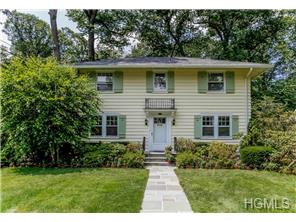 The Committee for Historic Preservation met on Tuesday night Setpember 16 to decide whether or not to give the go ahead to demolish six more homes in Scarsdale. The demolition of all six was approved.
The Committee for Historic Preservation met on Tuesday night Setpember 16 to decide whether or not to give the go ahead to demolish six more homes in Scarsdale. The demolition of all six was approved.
Here are the homes that will go down:
157 Brewster Road: (Pictured above) 3 bedroom, 3-bath home on quarter acre lot in Greenacres. Currently listed for $999,000. Built in 1926
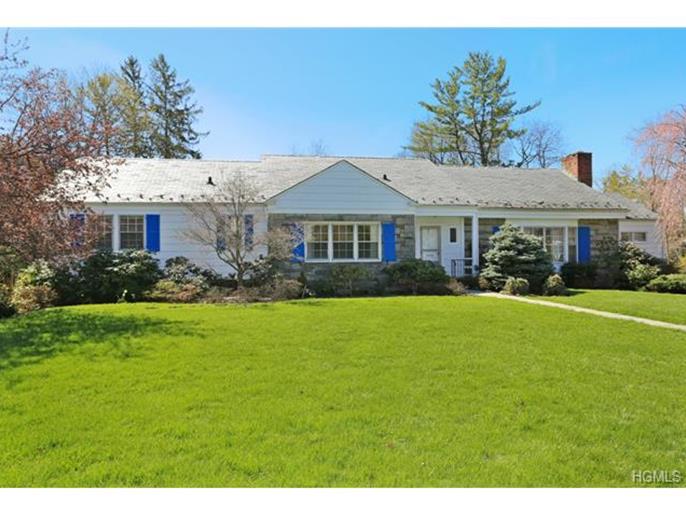 33 Stratton Road: 4 bedroom, 3.1 bathroom ranch on 2/3 of an acre in Quaker Ridge. Built in 1952. Currently listed for $1,517,000.
33 Stratton Road: 4 bedroom, 3.1 bathroom ranch on 2/3 of an acre in Quaker Ridge. Built in 1952. Currently listed for $1,517,000.
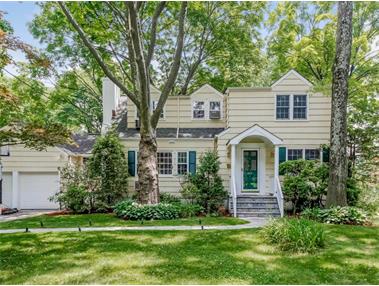 109 Carthage Road: Now listed as a picturesque colonial on .72 of an acre in Heathcote for $1,395,000. Built in 1949.
109 Carthage Road: Now listed as a picturesque colonial on .72 of an acre in Heathcote for $1,395,000. Built in 1949.
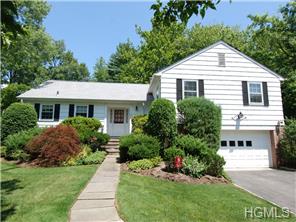 361 Heathcote Road: 3 bedroom, 3 bath split level home on 1/3 of an acre, currently listed for $949,000
361 Heathcote Road: 3 bedroom, 3 bath split level home on 1/3 of an acre, currently listed for $949,000
Homes not currently on the market:
45 Penn Boulevard built in 1952.
4 Brookline Road built in 1928













